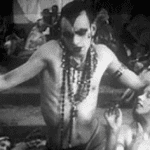 Weird Stuff
Weird Stuff  Weird Stuff
Weird Stuff  Our World
Our World 10 Ways Your Christmas Tree Is More Lit Than You Think
 Movies and TV
Movies and TV The 10 Coolest Stars to Set Sail on The Love Boat
 History
History 10 Things You Didn’t Know About the American National Anthem
 Technology
Technology Top 10 Everyday Tech Buzzwords That Hide a Darker Past
 Humans
Humans 10 Everyday Human Behaviors That Are Actually Survival Instincts
 Animals
Animals 10 Animals That Humiliated and Harmed Historical Leaders
 History
History 10 Most Influential Protests in Modern History
 Creepy
Creepy 10 More Representations of Death from Myth, Legend, and Folktale
 Technology
Technology 10 Scientific Breakthroughs of 2025 That’ll Change Everything
 Weird Stuff
Weird Stuff Ten Bizarre Facts About The Doge Meme
 Our World
Our World 10 Ways Your Christmas Tree Is More Lit Than You Think
 Movies and TV
Movies and TV The 10 Coolest Stars to Set Sail on The Love Boat
Who's Behind Listverse?

Jamie Frater
Head Editor
Jamie founded Listverse due to an insatiable desire to share fascinating, obscure, and bizarre facts. He has been a guest speaker on numerous national radio and television stations and is a five time published author.
More About Us History
History 10 Things You Didn’t Know About the American National Anthem
 Technology
Technology Top 10 Everyday Tech Buzzwords That Hide a Darker Past
 Humans
Humans 10 Everyday Human Behaviors That Are Actually Survival Instincts
 Animals
Animals 10 Animals That Humiliated and Harmed Historical Leaders
 History
History 10 Most Influential Protests in Modern History
 Creepy
Creepy 10 More Representations of Death from Myth, Legend, and Folktale
 Technology
Technology 10 Scientific Breakthroughs of 2025 That’ll Change Everything
10 Ways To Move Money Like A Crime Boss
Ever wonder how an illegal, multibillion-dollar, cash-only business hides its money? Or how drug lords and terrorist financiers transfer billions of dollars each year without getting caught? Money laundering can be a tough business—sometimes harder than making the money in the first place—especially under the watchful eye of federal authorities like the FBI and FinCEN (US Treasury’s Financial Crimes Enforcement Network). But the risk is well worth it to criminals across the globe, and they employ some pretty creative methods for moving around their fortunes.
Moving around illegal cash usually follows three stages: placement, layering, and integration. When illegal cash is generated, it must be placed into the financial system. Then the money must be layered within the financial system, meaning it is broken up or moved around sufficiently so that the audit trail is obscured. This phase effectively cleans the dirty money. Lastly, the now “clean” money is returned to its rightful owner, or integrated.
Seems simple, right? Not quite. As we will see from the following methods, money launderers need to deftly avoid financial regulations in order to implement each phase effectively. Creativity and innovation are key, and even the smallest misstep will result in a hefty prison sentence.
Note: This list is intended to be used for informative and educational purposes. We do not condone any of the illegal activities described.
10Start A Used Car Business

Don’t believe it? Just ask Hezbollah—Lebanon’s resident Shia army and a US-designated terrorist organization. It has more than a few illicit sources of income, and that’s not even counting the hundreds of millions of dollars provided yearly by Iran. From narcotrafficking to smuggling to the diamond trade, Hezbollah rakes in tens of millions of dollars each year from its extracurricular endeavors. So how does it funnel this revenue back into Lebanon without getting caught? It goes to its friendly neighborhood used car dealers.
In 2011, the DEA and the US Treasury Department uncovered an elaborate trade-based money laundering scheme facilitated by the Lebanese Canadian Bank (LCB) based out of Beirut. The LCB, along with two other exchange houses linked to Hezbollah, used illicit funds to purchase $329 million worth of used cars from 30 different dealerships in the US. These cars were then shipped to West Africa, where they were sold on the local market. Funds from these sales, now considered “clean” money, were funneled through Hezbollah accounts back into Lebanon. And who said being a used car salesman wasn’t glamorous?
9Prepaid Cards
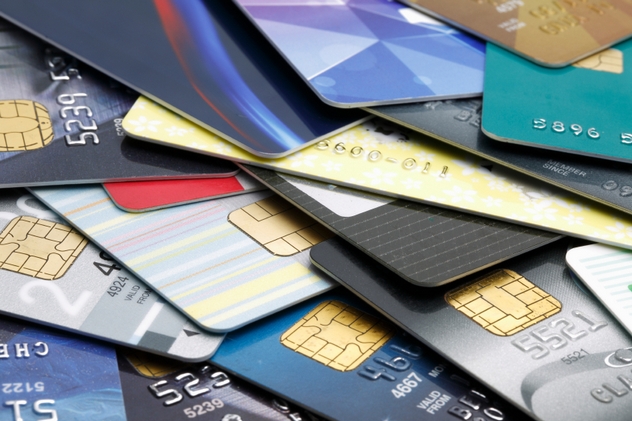
Prepaid cards, or stored value cards (SVC), have become increasingly popular over the past decade. They offer customers a fast, reliable, and sometimes anonymous method for storing cash. Criminals looking to move huge sums of cash—minus the bulk—across borders may look to SVCs as a viable option. It also makes it far easier to circumvent the US Customs requirement that $10,000 or more in cash be declared. A passenger carrying 20 SVCs with $5,000 loaded on each will stand out far less than the guy carrying $100,000 in cash.
Drug cartels across the border tend to agree, and it is estimated that they used the cards to smuggle an estimated $8 billion to $24 billion a year at one point. After all, it is much easier to cross the border with a deck of cards than a suitcase full of cash. In order to combat this epidemic, FinCEN closed the loophole in 2012 and demanded that SVCs be declared along with cash. Even still, would-be money smugglers out there will find it more convenient to hide a card instead of cash.
8Bitcoin
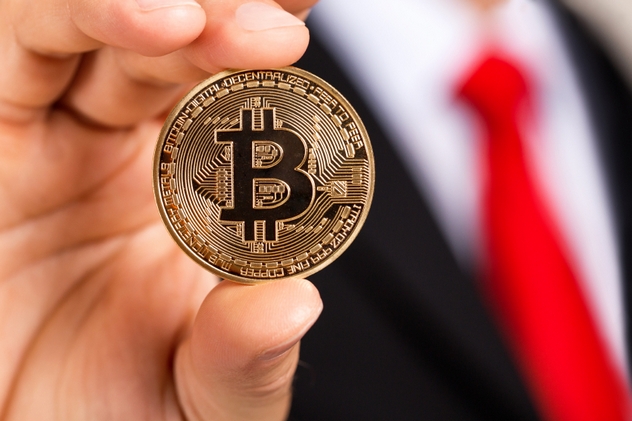
Made available to the public in 2009, bitcoin is a completely virtual currency that allows users to make peer-to-peer financial transactions with no intermediary. The US Treasury Department classifies it as a “decentralized digital currency.” On their own, bitcoin transactions are relatively transparent and recorded in a “block chain,” which is basically a public ledger. Nonetheless, resourceful criminals have found ways to exploit this relatively new cyber finance tool.
In 2014, millionaire CEO Charlie Shrem was arrested for laundering money for customers of the online drug bazaar Silk Road. Websites such as Silk Road, only found on what is commonly known as the “deep web,” require all transactions to be completed in bitcoins. Shrem’s company, BitInstant, helped one of its clients transfer millions of dollars in bitcoins to known criminals on Silk Road. Shrem was arrested in January 2014, shortly after Silk Road itself had been shut down.
This spelled the beginning of the end for crypto-anarchists’ dreams of online free markets such as Silk Road, but virtual money laundering isn’t dead yet. Applications such as Dark Wallet or Samourai Wallet are designed to make user identities of bitcoin owners completely private, enabling anonymous transactions and thus opening the door for safe and simple money laundering. Even Dark Wallet’s founders openly admit that their product can, and should, be used for black market activity.
7Become An Online Gamer

Online gaming has increasingly become an effective method to transfer money across international borders. In massively multiplayer online role-playing games (MMORPGs) such as World of Warcraft or Second Life, players can purchase in-game currency with real money. This currency can buy items within the game or even be transferred with ease to other players. Such an arrangement is ideal for international criminals who need to transfer money to associates in other countries while remaining almost completely untraceable. At worst, their edgy criminal persona is tainted by the geekiness of MMORPG. That’s a small price to pay.
In 2012, Chinese cybercriminals made good use of the nebulous online gaming world to cash out stolen account information from their fraud victims. Using the time-tested “click this link and win” trick, criminals were able to defraud small business owners in China of around $48 million. However, instead of using the stolen account information to simply purchase goods, the criminals bought currency in online games. This currency was easily converted to cash, and the criminals were spared the fate of doing $48 million worth of online shopping as a result.
6Smurfing
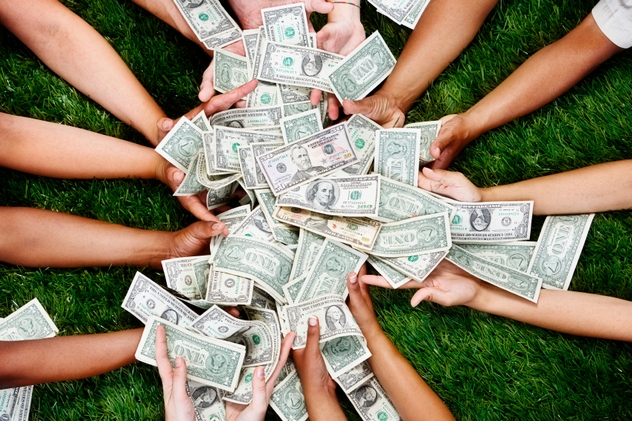
Smurfing is a financial structuring method that refers to the divvying up of large sums of cash into lesser amounts, preferably smaller than $10,000 (the reporting threshold for banks and US Customs). These smaller sums can then be deposited in various banks by different people—or “smurfs”—effectively accomplishing the placement phase of traditional money laundering.
Money laundering academics look to Alberto Barrera, aka Papa Smurf, as a textbook example of smurfing operations in the 1980s. Based out of Miami, Barrera employed a dozen Colombian henchmen who would take cash deposits to hundreds of banks across the US, buying cashier’s checks and money orders for about $5,000 each. The smurfs would return to Miami, often the same day, with the new financial instruments. Barrera could then deposit the checks into his accounts destined for Colombia, Panama, or elsewhere.
This scheme worked exceptionally well for the placement phase of money laundering, but Barrera’s system for actually layering it was less sound. Upon depositing the hundreds of cashier’s checks or money orders, authorities eventually caught on to Barrera, and he was arrested after a yearlong investigation. Nonetheless, Papa Smurf and his clever little smurfs still managed to launder about $12 million in total.
5Shell Companies
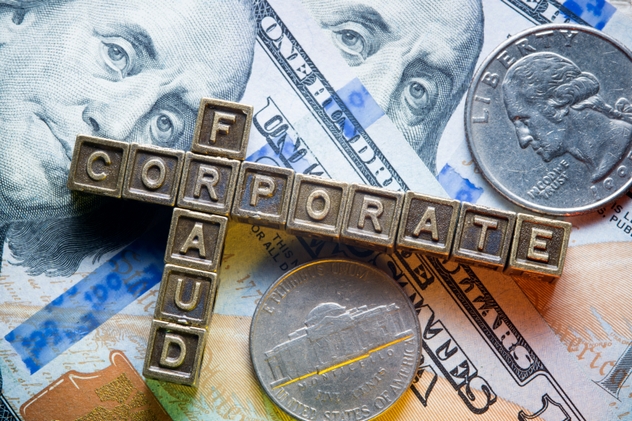
A shell company is a legitimate business in name only. In fact, a shell company provides no actual services, nor does it produce anything. The sole purpose of a shell company is to create the illusion of legitimacy through fake invoices and balance sheets, which allows the company to accept dirty money and mask it as legitimate profits. Often, these funds are used to buy other high-priced assets such as real estate, which can then be sold and cashed out through other shell companies in another country.
Alternatively, the shell company can simply be used to purchase luxury items as a way to mask the identity of the true purchaser, who stays under the radar. Lopez Tardon, a successful Spanish drug dealer who made his fortune in Madrid, attempted this method in Miami from 2001 to 2011. Before his arrest, Tardon managed to buy up 13 high-priced condos and 17 luxury cars through a shell company. Unfortunately for him, such extravagance landed him a whopping 150 years in prison.
Shell companies can also be effective conduits for stealing money, not just hiding it. In the 1990s, Russian crime boss Semion Mogilevich, described by the FBI as the “most dangerous mobster in the world,” cheated investors out of $150 million by setting up a web of shell companies in the US and overseas. This network of companies, along with forged annual reports and shady stock market listings, tricked investors into thinking he had a reputable international business. The reality was far different: These “businesses” did no business at all. Mogilevich still roams free in Moscow, far from the FBI’s reach.
Shell companies aren’t just used by drug dealers or mobsters, by the way. China uses shell companies to borrow vast sums of money for public use. This allows the government to hide its true public debt levels as a percentage of GDP, counting it as “private debt” instead. These devious accounting tricks increase China’s estimated debt to 282 percent of GDP. Compare that to the US federal debt of just under 100 percent of GDP.
4Black Market Peso Exchange
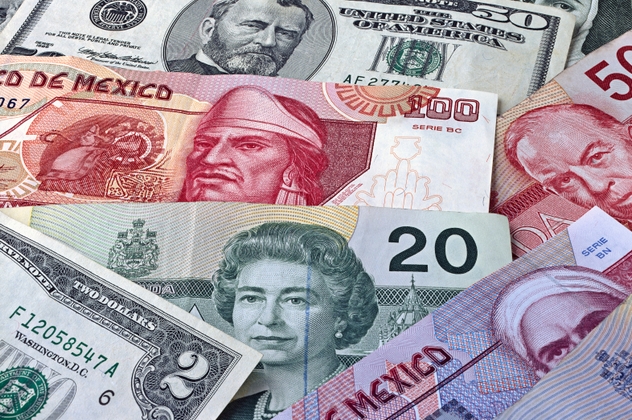
First discovered by authorities in the 1990s, the Black Market Peso Exchange is truly a one-stop shop for all phases of money laundering. The exchange was first used by Colombian cartels but has since been popularized in Mexico as well. The system was intricate, involving your traditional drug dealer, a peso broker, and a semi-legitimate business.
First, cash was distributed by the broker service among various checking accounts (essentially the same as “smurfing”). The broker then found legitimate businesses in the US and abroad that did cross-border trade and transactions. Businesses in Colombia or Mexico require US dollars to purchase goods inside the US and prefer a discounted exchange rate if they can get it. The broker took advantage of this and offered them dollar-denominated checks with the payee name blank. This check was filled in by the business and used to import US goods, specifically from a US-based business coordinated through the broker. These goods were shipped abroad, sold, and the peso-denominated profits were handed over to the drug dealers. Everyone got a cut along the way.
Clear as mud? An example might help. In 2014, an estimated $100 million was confiscated by federal authorities in LA’s downtown garment district, some of which was ransom money from kidnapped US citizens. Many of these small businesses were apparently being used as the US-based business element of the intricate system described above. The brokers found Mexican businesses willing to purchase goods from the LA-based garment shops and gave them the dollars to do so. The goods were shipped back to Mexico and sold for pesos, which eventually ended up in the hands of the Sinaloa cartel. Such an arrangement is also categorized as a trade-based money laundering scheme.
3Hawala, The “Underground Banking System”
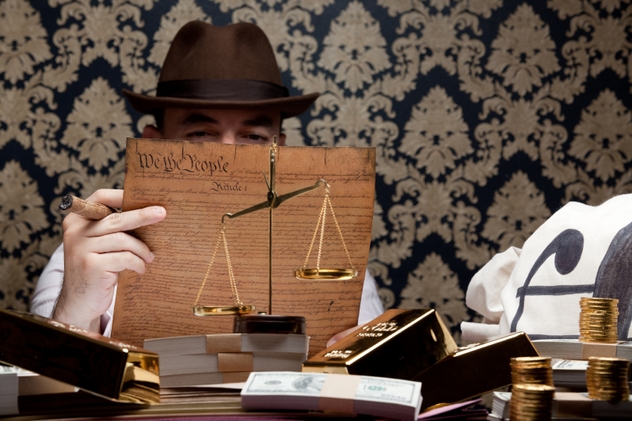
Hawala is an informal banking system that first surfaced in ancient India. The term actually means “money transfer without moving money,” and for good reason. The hawala system consists of hundred of thousands of brokers, or hawaladars, throughout the globe. Each keeps a detailed ledger of transactions that largely relies on an honor system to enforce. An individual, lets say “Bob,” who wants to send money to his friend “Betsy” in another country, will simply give the money to his local hawaladar. This money does not move. Instead, Bob’s hawaladar communicates the intended monetary amount to the hawaladar in Betsy’s country. It is that hawaladar who will settle the balance with Betsy, minus a small commission, of course. The hawaladars settle up with each other separately, on their own terms. The end result is a nearly untraceable money transfer between Bob and Betsy.
Hawalas are popular due to their favorable exchange rates, low commission fees, efficiency, and reliability. Even illegal hawaladars have much to lose by gaining a reputation for losing their customers’ money. Other benefits include anonymity, lack of burdensome paperwork (such as opening a bank account), and tax avoidance.
This doesn’t mean that hawalas are illegal. In fact, many hawalas in the US are legally registered with the US Treasury Department, offering services similar to those offered by companies like Western Union. Because these legal hawalas have regular reporting requirements, authorities can trace their transactions. But illegal hawalas, often run out of a home or small business, operate under the radar and far from the reach of the US Treasury.
Given all these traits, one can see how easy it might be to use a hawala for money laundering. Criminals would agree. In 2013, three Somali immigrants were arrested in San Diego for conspiring to provide financial support to the terrorist organization Al-Shabab. Their plan was to use a harmless-sounding hawala named the Shidaal Express. Similarly, in 2003, authorities discovered an illegal hawala in New York called the Manhattan Foreign Exchange, accused of laundering about $33 million in drug money to Pakistan over a three-year period.
2Legitimate Business: Hiding In Plain Sight

Much like Walter White’s notorious car wash in the TV drama Breaking Bad, or Tony Soprano’s strip club in The Sopranos, criminals can find safe havens for illegal cash in otherwise legitimate businesses. This method works best when using mostly cash businesses, such as restaurants, bars, casinos, check-cashing stores, or car washes. The only downside is that businesses must pay taxes on the extra income.
These businesses, otherwise known as “front companies,” are effective at hiding money, also known as the placement phase. But how do criminals move money using a front company, say to an associate in another country? Invoice accounting tricks are one answer. In this clever but simple scheme, a business will change the invoice amount for a product or service in order to move additional funds back and forth.
Take the following example. George Lee, based out of Hong Kong, owned an import-export business called White Horse Trading. John Kong, based in San Francisco, owned an aircraft parts company called Asia Airframe. Both men, outside their legitimate businesses, were also involved in the heroin trade. Kong would receive heroin shipments from Lee on a regular basis and therefore owe him rather large payments. Instead of using risky wire transfers, with all of the pesky reporting requirements attached, the businessmen sold each other vastly undervalued merchandise. Back in China, Lee would order $500,000 worth of airline parts from Asia Airframe, but Kong would only bill him for $50,000. The $450,000 difference accounted for the amount that Kong owed Lee for the heroin. Simpler and safer than simply wiring money.
1Horse Racing

Ever had the sense that something about an unusually small man wearing skintight pants and racing a horse just seemed . . . off? Well, perhaps that sense of strange is what attracted one of the deadliest cartels in Mexico, Los Zetas, to use quarter horse racing as a means to launder drug money.
The Trevino brothers, leaders of Los Zetas, invested millions of dollars worth of drug money into the American quarter horse racing industry. They created a legitimate and profitable racing conglomerate, eventually accruing $28 million in assets that included a 140-acre farm in Oklahoma and two private jets, not to mention 522 quarter horses worth $12 million. The establishment effectively hid the source of vast sums of cash that the brothers made in the drug trade. Their downfall came in 2012, when they started naming horses things like “Number One Cartel.” Authorities soon caught on. Shocking.
Reed is an aspiring author and full-time pirate.

